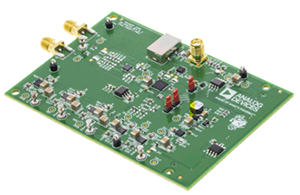RemoTI? Capacitive Touch Sensing (Rev. B)
Texas InstrumentsAs consumers become accustomed to elegant touch interfaces on a variety of devices, these capabilities are becoming more expected on a greater number of devices. The <a href=http://www.ti.com/ww/en/an
Robust Hot Swap Design (Rev. A)
Texas InstrumentsLM5066, LM5066I, LM5067, LM25066, LM25066I, LM25066IA, LM25066A, LM5064 Robust Hot Swap Design
Extending the Wide Output Voltage Capability of the TPS6108x Boost Converter
Texas InstrumentsThis application report explains how to extend the wide output voltage range capability of the TPS6108x by a factor of two using a discrete charge pump.
TRF796x HF-RFID Reader Layout Design Guide
Texas InstrumentsTRF7960, TRF7960EVM, TRF7961 TRF796x HF-RFID Reader Layout Design Guide
DN-68 Paralleling UCC3912 Electronic Circuit Breaker ICs
Texas InstrumentsThe UCC3912 IC is an integrated 3A electronic circuit breaker that includes programmable overcurrent protection and retry timing following a fault. Other common uses for this function are in higher cu
AN-A The Monolithic Operational Amplifier: A Tutorial Study
Texas InstrumentsAN-A The Monolithic Operational Amplifier: A Tutorial Study
Using the Stellaris Serial Flash Loader (AN01242)
Texas InstrumentsThis application note describes how to communicate with the Stellaris serial flash loader application.
Dual Output Boost Converter
Texas InstrumentsThe boost converter is modified to provide bipolar 12-V outputs from 5-V supply. Using the UCC3803 to control the basic boost converter building block the -12-V outputs are generated using a coupled inductor and a flying capacitor. Output voltage regulation and efficiencies are compared and presented.
Spread-Frequency Shift Keying Power Line Modem Software Architecture
Texas InstrumentsThis application report describes the software architecture and design of the Spread-Frequency Shift Keying Power Line Modem demonstration platform. Each demonstration unit consists of an eZdsp DSP de
Reference Framework 3: A Flexible, Multi-Channel/Algorithm, Static System (Rev. D)
Texas InstrumentsReference Frameworks for eXpressDSP Software are provided as starterware for developing applications that use DSP/BIOS and the TMS320 DSP Algorithm Standard (also known as XDAIS). Developers first sel
SymPol Transceivers are Immune to Cross-wire Faults
Texas InstrumentsSN65HVD96 SymPol Transceivers are Immune to Cross-wire Faults
Hardware Interfacing to the TMS320C2x ( Contains Scanned Text) (Rev. B)
Texas InstrumentsThis chapter suggests hardware design techniques for interfacing memories and peripherals to the TMS320C2x and notes appropriate differences between the TMS320C2x and TMS32020. The first section discusses ready generation techniques and describes interfaces to the TMS320C2x for- PROMs- EPROMs- SRAM (Static RAMs)The second section describes hardware interfaces to the TMS320C2x t
Different Control Mode for Synchronization Buck or Boost Topology by Using C2000
Texas InstrumentsDifferent Control Mode for Synchronization Buck or Boost Topology by Using C2000 MCU written by Chinese engineer
Using Windowing With SNRBoost 3G Technology
Texas InstrumentsCoherency is a well-known requirement when using FFT techniques to examine the spectrum of the output of an analog-to-digital converter. SNRBoost(3G) technology results in loss in coherency and this can be seen as an unstable noise floor in the spectrum. Windowing of the ADC output is a well-known solution to restore coherency and stable spectrum.However windowing also modifies the amplitude o





